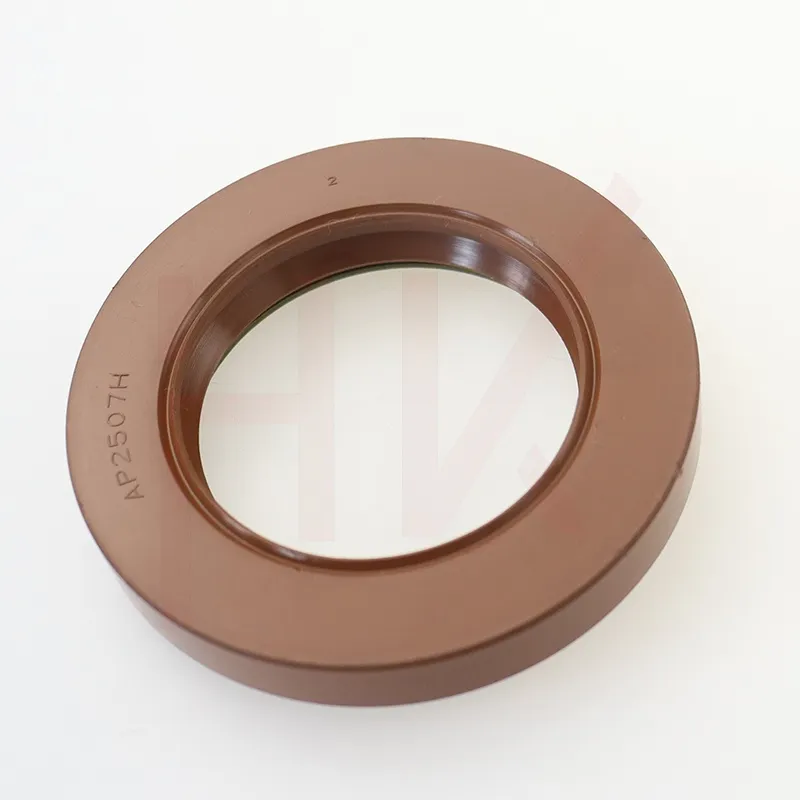Dec . 12, 2024 11:21 Back to list
high temperature oil seal
High Temperature Oil Seals Ensuring Efficiency in Extreme Conditions
In the world of engineering and machinery, the integrity of components is paramount. Among these components, oil seals play a crucial role, particularly those designed to withstand high temperatures. High temperature oil seals are specially engineered to maintain their performance and longevity even in the most demanding environments. This article delves into the importance, materials, applications, and maintenance aspects of high temperature oil seals.
Understanding High Temperature Oil Seals
Oil seals, often referred to as shaft seals or dust seals, are mechanical devices that prevent the leakage of lubrication fluids while protecting the internal components from external contaminants. In high-temperature applications, these seals must not only prevent leaks but also withstand thermal degradation caused by elevated operating temperatures.
High temperature oil seals are typically used in applications where the operational temperature exceeds the limits of standard seals, which can be around 80-100 degrees Celsius. These seals are engineered to function effectively in environments that can reach upwards of 200 degrees Celsius or more, making them essential in sectors like automotive, aerospace, manufacturing, and energy production.
Materials Used in High Temperature Oil Seals
The performance of high temperature oil seals largely depends on the materials used in their construction. Common materials for high temperature seals include
1. Fluorocarbon Rubber (FKM) Known for its excellent resistance to heat, chemicals, and oils, FKM is a preferred choice for high-temperature applications. It can sustain temperatures ranging from -20 to 200 degrees Celsius.
2. Silicone Rubber With excellent flexibility and a high-temperature tolerance, silicone is ideal for seals that require low-temperature flexibility and high-temperature performance. It can operate effectively in temperatures up to 260 degrees Celsius.
3. Polyurethane This material offers a good balance of mechanical properties and thermal resistance, making it suitable for dynamic sealing applications.
4. PTFE (Polytetrafluoroethylene) PTFE seals are known for their outstanding thermal and chemical resistance, providing excellent performance in extreme conditions. They can withstand temperatures from -200 to 260 degrees Celsius.
Choosing the right material is crucial to ensure the oil seal maintains its properties and functionality over time, thereby extending the life of the machinery it protects.
Applications of High Temperature Oil Seals
high temperature oil seal

High temperature oil seals find application across various industries
- Automotive Industry In engines and transmissions, high temperature oil seals prevent lubricant leakage and contamination from external elements. They are essential in maintaining the efficiency of engines that operate under high temperatures.
- Aerospace Sector Aircraft engines and systems withstand extreme operational conditions, necessitating the use of high performance, temperature-resistant seals to ensure safety and reliability.
- Manufacturing Equipment In factories where machinery operates at elevated temperatures, oil seals are critical in preventing downtime caused by oil loss and contamination.
- Energy Production Power plants, especially those using steam or gas turbines, require high temperature oil seals to function efficiently under high thermal stresses.
Maintenance of High Temperature Oil Seals
While high temperature oil seals are designed for durability, regular maintenance is essential for prolonging their lifespan. Here are some maintenance tips
1. Routine Inspection Regularly check seals for signs of wear, cracking, or deformation. Early detection of issues can prevent catastrophic failures.
2. Monitoring Operating Conditions Ensure that operating temperatures do not exceed the specified limits for the seal material used. Excessive heat can lead to premature failure.
3. Lubrication Management Ensure proper lubrication to reduce friction and wear on the seals, which can be exacerbated by high temperatures.
4. Replacement Cycle Establish a replacement schedule based on operational demands and the type of seals used, to prevent unexpected breakdowns.
Conclusion
High temperature oil seals are a vital component in various industries, functioning effectively to contain oils and lubricants in demanding thermal environments. With the right materials and careful maintenance, these seals can ensure optimal performance and reliability of machinery. As industries continue to evolve and face new challenges, the development of advanced high temperature oil seals will play a crucial role in enhancing operational efficiency and safety.
-
TCN Oil Seal Metal Ring Reinforcement for Heavy Machinery
NewsJul.25,2025
-
Rotary Lip Seal Spring-Loaded Design for High-Speed Applications
NewsJul.25,2025
-
Hydraulic Cylinder Seals Polyurethane Material for High-Impact Jobs
NewsJul.25,2025
-
High Pressure Oil Seal Polyurethane Coating Wear Resistance
NewsJul.25,2025
-
Dust Proof Seal Double Lip Design for Construction Equipment
NewsJul.25,2025
-
Hub Seal Polyurethane Wear Resistance in Agricultural Vehicles
NewsJul.25,2025
-
The Trans-formative Journey of Wheel Hub Oil Seals
NewsJun.06,2025
Products categories
















